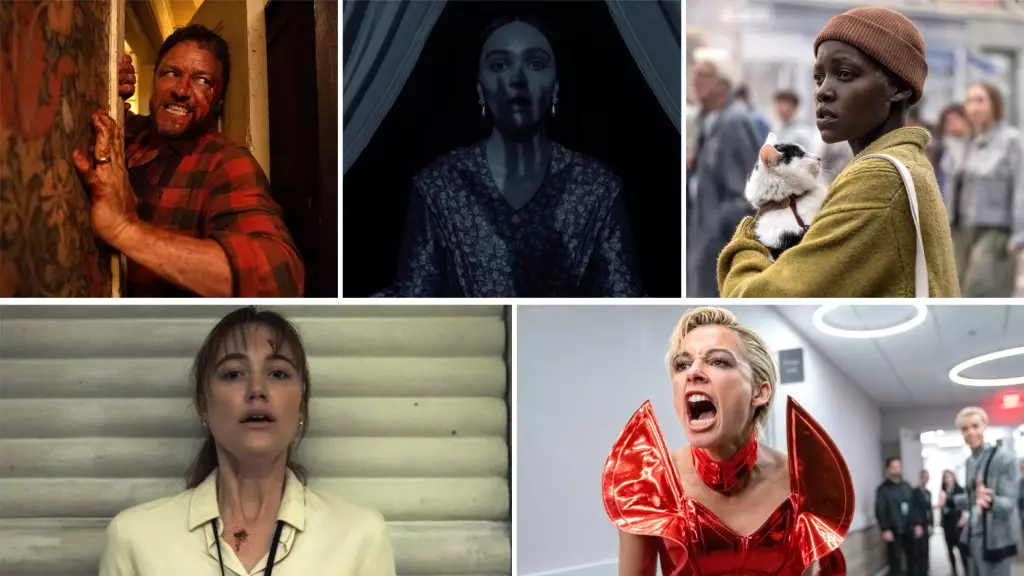As the cinematic landscape evolves, the horror genre has emerged as a surprisingly robust player within the box office arena. The resurgence of horror films in 2024 demonstrates not merely a fleeting trend but the genre’s capability to resonate deeply with audiences who crave suspense, psychological insight, and visceral thrills. The recent Deadline analysis of the year’s most lucrative films reveals an awe-inspiring narrative behind the financial success of various horror blockbusters. With a keen focus on net profits rather than mere box office earnings, this examination throws light on how authentically driven storytelling, adept marketing strategies, and timely releases cleverly coincide to forge successful cinematic endeavors.
One cannot overlook the evolving dynamics of how films are evaluated in terms of profitability, particularly when factoring in the ancillary revenue from home entertainment and streaming deals. Traditional film studios have learned to adjust their strategies as they navigate the ever-competitive market, and horror films have taken the lead by showcasing an ability to leverage production costs while still delivering impressive returns.
The Breakout Performers
Among the standout films of 2024, “A Quiet Place: Day One” by Paramount is a prime example of excellent execution and astute planning. Departing from its predecessors, this film not only managed to evoke the original’s thrilling atmosphere but also expanded the franchise’s scope by introducing new characters played by highly respected actors like Lupita Nyong’o and Joseph Quinn. This strategic shift proved fruitful as the film opened with a remarkable $52.2 million, establishing a new benchmark for the franchise.
Interestingly, filmmakers have started to recognize that the strength of a franchise isn’t solely derived from its original cast. Rather, it hinges more on building a cohesive universe that can entertain viewers while continuing to provoke thought. The success of “A Quiet Place: Day One” encapsulates this shift, showcasing that horror films now not only serve to entertain; they can craft narratives that are expansive and intricate.
Unexpected Successes in New Territories
The unexpected triumph of Focus Features’ “Nosferatu” signals another notable chapter in horror’s renaissance. This audacious reimagining of a classic tale generated compelling anticipation, evidenced by the staggering 65 million global views of its first trailer. While period horror often bifurcates audiences, “Nosferatu” managed to capture both the award-hungry crowd and genre aficionados through a meticulously crafted marketing strategy.
Its success speaks volumes not merely about the film itself but also about the distribution model that orchestrates the modern cinematic experience. By enveloping the audience in an electrifying buildup, the film has demonstrated that innovative marketing combined with authentic storytelling can yield enormous success, even for niche genres. With a net profit of $70 million, it’s clear that such experiences resonate far beyond simple thrill-seeking; they invoke emotional engagement that often leads to transformative box office performance.
The Formula of Marketing Brilliance
Paramount’s “Smile 2” also exemplifies a masterclass in sequential storytelling and shrewd marketing. The sequel capitalized on its predecessor’s success while maintaining continuity through the original creator, Parker Finn. The film’s promotional strategy blurred the lines between fiction and reality, turning the pop star’s character’s haunted existence into a continuous media narrative outside the film itself. By integrating real-world elements within the fictional realm, the marketing captured attention in a saturated media space.
This astute approach yielded an impressive net profit of $55.4 million, confirming that today’s horror films are more than just storylines; they are cultural phenomena that engage audiences on multifaceted platforms. As these films push boundaries, they are setting a precedent for how we perceive character arcs and story developments, not just on-screen but in everyday life.
Innovation Through New Perspectives
Films like “Speak No Evil,” produced by Blumhouse, showcase how low-budget investments can culminate in high dividends when grounded in relatable human fears and societal critiques. With a production cost of merely $15 million, the film adeptly navigates the horror genre’s psychological layers by exploring the complexities of human relationships under dire circumstances.
This thematic depth is a facet that modern audiences seek, enriching the narrative complexity popularized in contemporary horror. Blooms’ innovative storytelling approach combined with a calculated release strategy has shown that even new entries into the saturated market can yield substantial profitability, an essential part of their appeal.
In this dynamic film industry, the narratives we choose to tell and how we tell them will continue to shape audience experiences, cementing horror’s place not only as a genre but as an artistic medium capable of profound exploration and innovation. As the genre evolves, we are reminded that the power of storytelling, when deeply rooted in authentic human emotion and cleverly executed, can indeed ensure that the horror of yesterday morphs into the triumphs of today.

